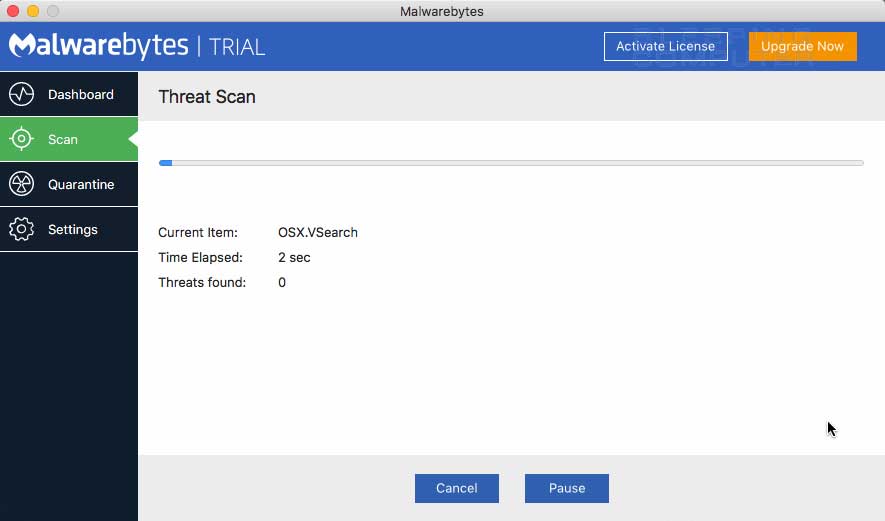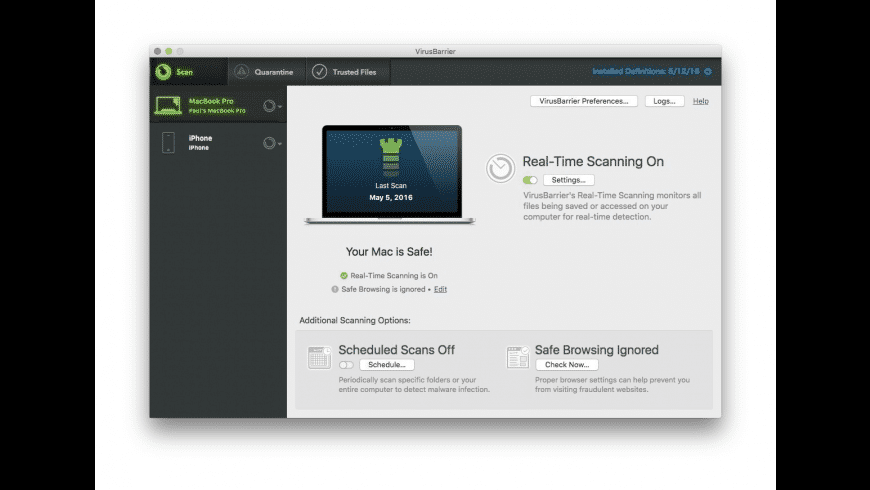Macintoshes don’t have the same problems as Windows computers with malware or adware, but that doesn’t mean they are immune. The attacks are different on a Mac, but just as annoying. Luckily, there are a few ways to remove unwanted Mac programs and prevent them from coming back.

The most popular infections I see in the wild are Genieo and
Once the problem software is on the Mac, Safari or another browser’s search engine changes and ads are injected. Sometimes the computer isn’t infected, but an intrusive ad pops up and prevents the user from surfing. These ads either take advantage of the Mac’s resume feature or use a JavaScript that prevents Safari from going further.
Some of these infections start as a Safari ad that won’t go away until you click a link or call a special number. The window might claim you are being watched by the FBI, like PC Ransomware. A few of these ads will start talking to you. Don’t fall for that scam. To get Safari back in order, first you’ll need to force quit Safari.
Antivirus Mac 10.6.8 free download - Avast Free Antivirus, Malwarebytes, Panda Free Antivirus, and many more programs. ClamXav v2 still supports OS X 10.6.8+ and will continue to do so until v3 is released (no projected date). I'm not aware of any other current A-V software that still does. That being said, those pop-ups about being infected are not due to anything on your Mac.
Hold down the
Malwarebytes For Mac 10.6 8
 Check out other ways of stopping any Macintosh application. As ads get more sophisticated, it may be harder to quit Safari or other browsers.
Check out other ways of stopping any Macintosh application. As ads get more sophisticated, it may be harder to quit Safari or other browsers.Some browsers are set to re-open the last window that was active before closing, so you’ll face the same problem again. To fix that in Safari, hold down the shift key while opening up Safari. That prevents any previous windows from coming up.
With Firefox, holding down the option key opens it in safe mode and disables the start screen. With Chrome, you’ll need to start in incognito mode, but you may need a program to help with that. Then you can move onto removal.
When you have a working browser, the best program for removing Mac
Users of 10.6.8 Snow Leopard or below will need do a manual removal. Adware Medic’s site has a great guide for manual removal. For Snow Leopard, the Sophos Anti-Virus for Mac Home Edition does a good job of removing malware and is also free.
Apple’s Removal Guide:Malwarebytes For Mac Download
Apple has its own guide for removing Mac adware, but it’s hard to follow and covers just the operating system and Safari.Mac infections don’t usually come from the same sources as PC infections. They’re unlikely to be attached to an email or embedded in a
The most popular trick I see is an ad that convinces the user that Adobe Flash Player is out of date. I almost fell for that trick once. My Mac warned me before I installed it.
If you need to download software for your Mac that isn’t available in the App store, surf directly to the manufacturer’s website. Avoid searching for the product name since that may bring up ads. Search for the manufacturer and then find the product on their website. As an example, instead of searching for Adobe Flash Player, search for Adobe.
Apple’s Antivirus is Built-in: Apple’s Xprotect keeps your Mac from getting infected most of the time. It updates itself when Apple updates the MacOS.Scamzapper is a Safari Extension designed to prevent ads from locking up the browser. It blocks those JavaScript windows that prevent the user from moving forward in the browser. If you or someone you know keeps getting hit by those ads,
Otherwise, blocking ads and Flash whenever possible reduces the risk you’ll be tricked into downloading something you didn’t intend to. Two extensions I recommend are ClickToFlash and Adblock Plus. They prevent the annoying ads from coming through, including infected ads.
Safe Than Sorry
The above article may contain affiliate links which help support Guiding Tech. However, it does not affect our editorial integrity. The content remains unbiased and authentic.Also See#antivirus #safari
Did You Know
Rootkits are a type of Trojan horse and are designed to conceal certain objects in your system.
More in Mac
A Guide to Fixing iMessage Notifications Not Showing Contact Name
There are two answers to that question, actually three!
How to prevent ads and pop-ups: Download and install GlimmerBlocker: http://glimmerblocker.org/
How to prevent re-direction:
Adding Open DNS codes to your Network Preferences, should give good results in terms of speed-up as well as added security, (including anti-phishing and redirects) (Full information about Open DNS is here: http://www.opendns.com/home/nobloat ) and further independent information can be read here:
and here:
Open System Preferences/Network. Double click on your connection type, or select it in the drop-down menu, and in the box marked 'DNS Servers' add the following two numbers:
208.67.222.222
208.67.220.220
(You can also enter them if you click on Advanced and then DNS)
Thirdly: malware!

There are many forms of ‘Malware’ that can affect a computer system, of which ‘a virus’ is but one type, ‘trojans’ another. Using the strict definition of a computer virus, no viruses that can attack OS X have so far been detected 'in the wild', i.e. in anything other than laboratory conditions. The same is not true of other forms of malware, such as Trojans. Whilst it is a fairly safe bet that your Mac will NOT be infected by a virus, it may have other security-related problem, but more likely a technical problem unrelated to any malware threat.
You may find this User Tip on Viruses, Trojan Detection and Removal, as well as general Internet Security and Privacy, useful:

The User Tip (which you are welcome to print out and retain for future reference) seeks to offer guidance on the main security threats and how to avoid them.
